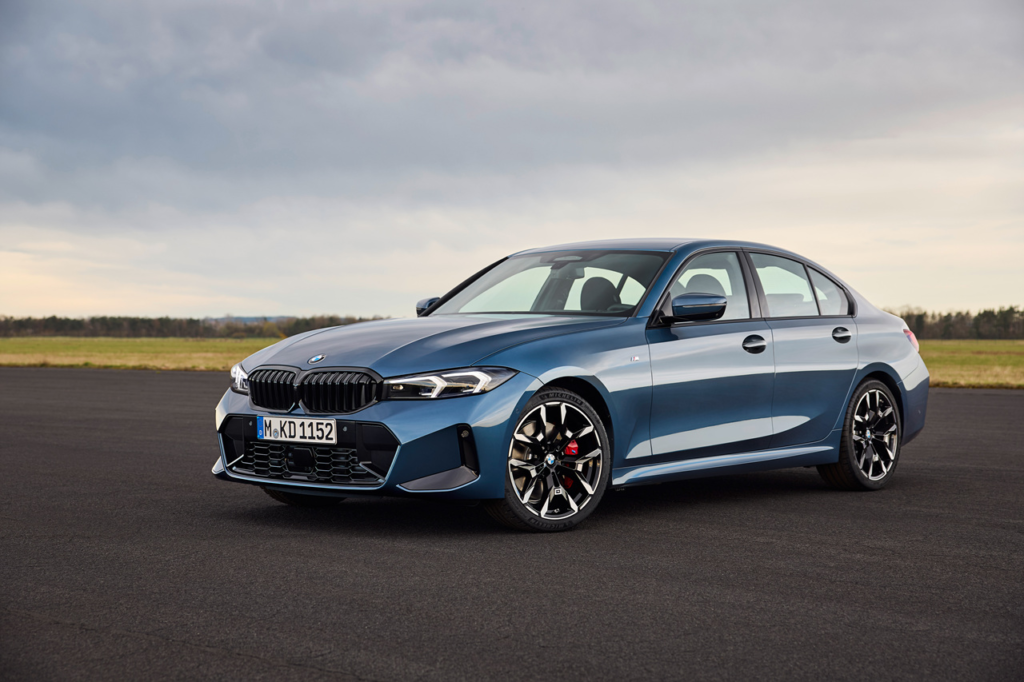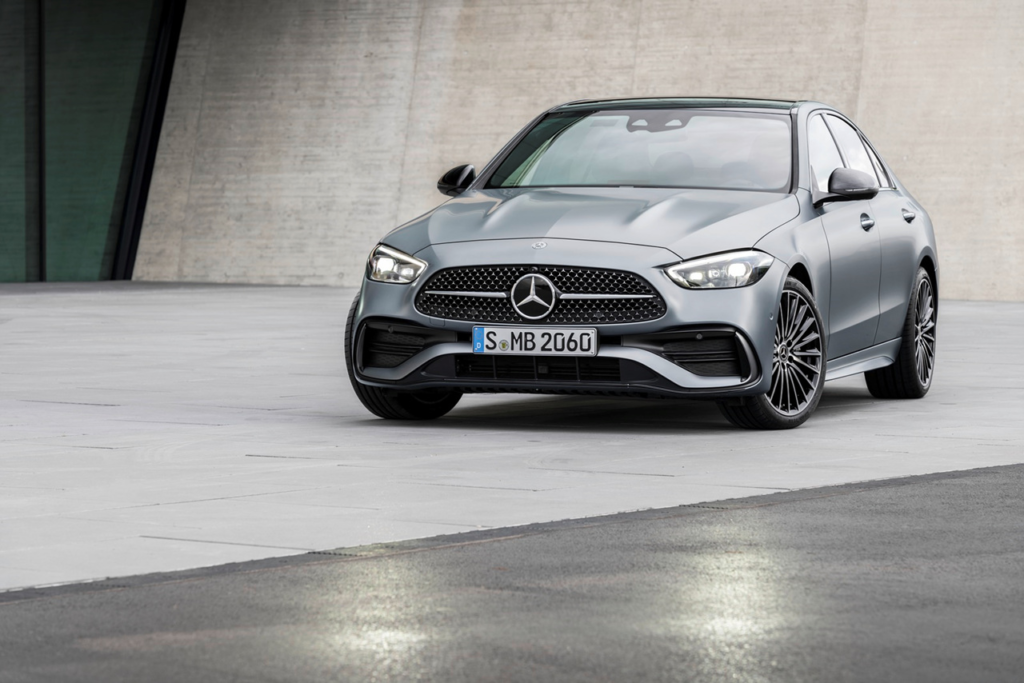
Hello! This is DealerNara’s Park Dae~
Today, we will thoroughly compare the two giants of premium mid-size sedans, the BMW 320i and the Mercedes-Benz C200. We’ll dive deep into whether the price difference of 3 million KRW is reasonable and what points you should consider when making a purchase!

1. Basic Vehicle Specifications Comparison
| Item | BMW 320i A/T | Mercedes-Benz C200 Avantgarde A/T | Difference |
|---|---|---|---|
| Base Price | 58,600,000 KRW | 61,600,000 KRW | BMW is 3,000,000 KRW cheaper |
| Actual Cost | 62,782,120 KRW | 65,994,170 KRW | BMW is 3,212,050 KRW cheaper |
| Combined MPG | 12.2 km/ℓ | 11.9 km/ℓ | BMW is 0.3 km/ℓ more efficient |
| Length | 4,715 mm | 4,795 mm | Mercedes is 80 mm longer |
| Height | 1,440 mm | 1,455 mm | Mercedes is 15 mm taller |
| Wheelbase | 2,850 mm | 2,865 mm | Mercedes is 15 mm longer |
| Max Power | 190/4400~6500 ps/rpm | 204/6100 ps/rpm | Mercedes is 14 ps more powerful |
| 0-100 km/h | 7.3 seconds | 7.3 seconds | Same performance |
Do you see the differences? The actual purchase price difference, which seems to be just 3 million KRW, actually extends to 3.21 million KRW due to taxes and additional costs proportional to the vehicle price.
Here are some notable points:
Body Size Differences
- The C200 is 80 mm longer in length, a difference noticeable in person.
- The wheelbase is also 15 mm longer, making the interior more spacious.
- On the other hand, the 320i’s more compact size can make city driving easier.
Performance Differences
- Interestingly, while the C200 has 14 more horsepower, the 0-100 km/h time is identical at 7.3 seconds.
- The lighter weight of the 320i allows it to match the performance.
Fuel Efficiency and Economy
- The 320i is 0.3 km/ℓ more efficient, resulting in annual savings of about 160,000 KRW. While not huge, it’s still a difference.

2. Basic Vehicle Options Comparison
| Item | BMW 320i | Mercedes-Benz C200 | Notes |
|---|---|---|---|
| Main Display | 14.9 inches (O) | 11.9 inches (△) | 320i has a larger screen |
| HUD | O | X | Only the 320i includes this |
| Panoramic Sunroof | X | O | Only the C200 includes this |
| Ventilated Seats | X | O | Only the C200 includes this |
| Power Tailgate | X | O | Only the C200 includes this |
| Remote Start | X | O | Only the C200 includes this |
| 10 Speaker System | O | X | Only the 320i includes this |
| Ambient Lighting | O | O | C200 offers 64-color options |
| Electronic Parking Brake | O | O | Same |
| Wireless Phone Charging | O | O | Same |
| Apple CarPlay/Android Auto | O | O | Same |
The options clearly show the philosophies of each brand.
Infotainment System
- The 320i offers a 14.9-inch large display, providing a more immersive screen.
- The inclusion of a HUD reflects BMW’s driver-centric approach.
Convenience Features
- The C200 stands out with its panoramic sunroof and ventilated seats as standard.
- The 64-color ambient lighting creates a premium interior ambiance.
3. Vehicle Tax and Fuel Efficiency Comparison
| Item | BMW 320i | Mercedes-Benz C200 | Difference |
|---|---|---|---|
| Vehicle Tax | 519,480 KRW | 519,740 KRW | Mercedes is 260 KRW higher |
| Annual Fuel Cost | 6,299,890 KRW | 6,458,710 KRW | Mercedes is 158,820 KRW higher |
| Total Cost | 7,832,350 KRW | 7,991,940 KRW | Mercedes is 159,590 KRW higher |
When looking at annual maintenance costs, some interesting points emerge:
- Tax Differences
- The difference in vehicle tax is negligible at just 260 KRW.
- Both cars are 2.0-liter gasoline engines, so they fall in the same tax bracket.
- Fuel Costs
- The difference in fuel efficiency results in an annual cost difference of about 160,000 KRW, or about 13,000 KRW per month, which is not a significant burden.

“So, Park Daeri, which car do you recommend?”
✅ BMW 320i is suitable for buyers who:
- Prefer a driver-centric interface.
- Value a large display and HUD.
- Frequently drive in the city and prioritize ease of parking.
✅ Mercedes-Benz C200 is suitable for buyers who:
- Value interior space and luxurious options.
- Desire premium features like a panoramic sunroof and ventilated seats.
- Place importance on brand prestige.
In the end, the 300,000 KRW difference boils down to personal lifestyle and preferences.
Ultimately, the right choice will depend on what fits your lifestyle best!
I’ll be back with another car comparison soon.
Thank you!
